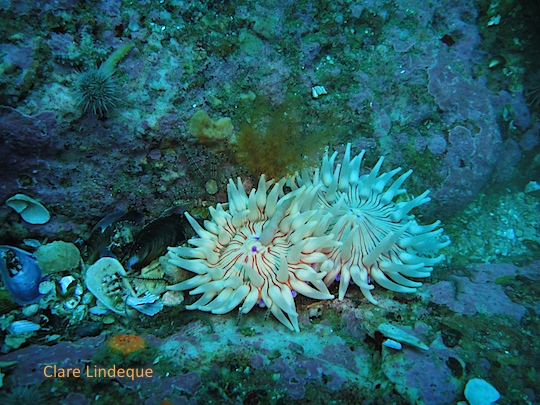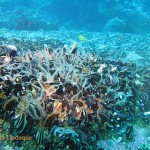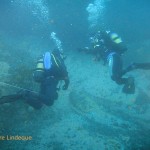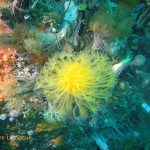
It seems that it’s only on magnificent days that we end up launching from Oceana Power Boat Club. While my colleagues were having an end of year function just above Clifton Beach, I was floating on the surface a few hundred metres off the same beach, waiting to be picked up by the boat after a dive. You’ll recall that we had a week or more of incredibly strong southeasterly winds at the end of November. The wind dropped during the night of 30 November, and hours later we were on the boat. The aim was to complete Christo’s deep dive for his Advanced course, and our hope was for excellent visibility.
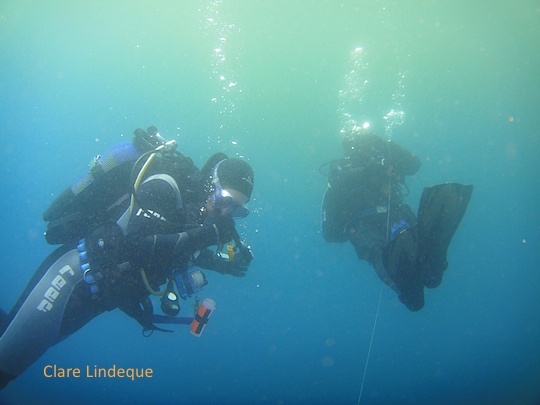
The Atlantic is so capricious, however, that the surface layer was already turning green with a layer of happily multiplying phytoplankton when we arrived to dive it. I am unreasonably pleased with this picture of Christo and Tony at the safety stop, right at the boundary of the blue and green water.
Beneath the layer of pale green we discovered crystal clear, freezing cold water. I can well understand how falling into the water in the Southern Ocean or Bering Sea can be fatal after this dive. Towards the end I doubted my ability to swim for the surface, and just wanted to lie down on the bottom and go to sleep!

Monty’s Pinnacles refers to part of the North Paw complex, a large area of granite reef that has several distinct dive sites within it. We have also dived the northern pinnacle. Monty’s Pinnacles lie a short distance to the north of the exposed rocks that mark the main North Paw reef. There’s a map here. The two pinnacles were discovered by local diving legend Monty Guest while scootering around the area in 2010. They rise to within 10 metres of the surface. The topography is spectacular, with great ridges in the granite that are so straight as to appear to be machine-hewed. Small stands of kelp grow all the way down to 25 metres, testifying to the clarity of the water here at certain times of the year.
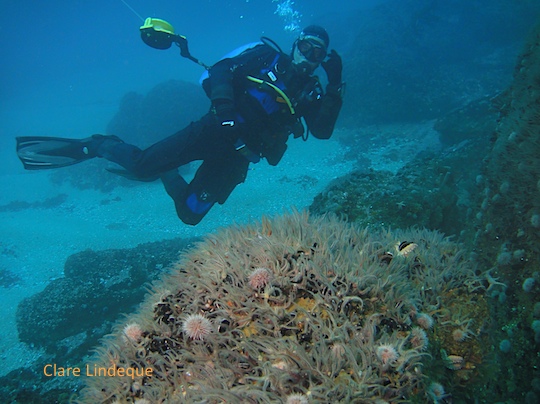
I didn’t see much unusual macro life (perhaps in my near-hypothermic state I had reduced powers of observation), but the rocks are heavily encrusted with mussels, brittle stars, and urchins. There are very large west coast rock lobsters everywhere you look. I saw the odd sea cucumber and a couple of anemones, but the chief beauty of this site for me is the passages and tumbled boulders that one swims among. There are swim throughs here, but we didn’t find them.

The view upon surfacing is spectacular, with the Twelve Apostles and the Atlantic seaboard to feast your eyes on.

Dive date: 1 December 2012
Air temperature: 28 degrees
Water temperature: 9 degrees
Maximum depth: 25.9 metres
Visibility: 15 metres
Dive duration: 30 minutes
